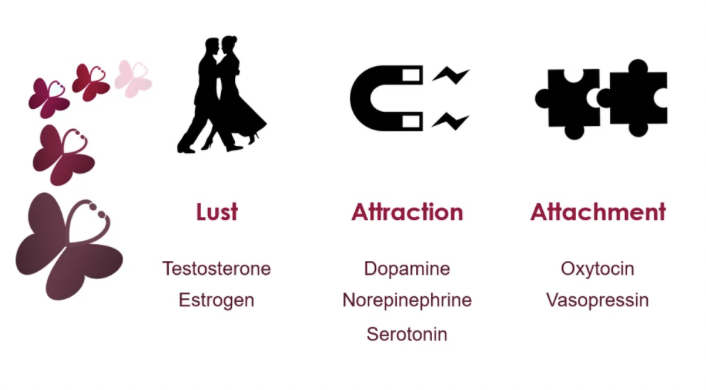THE SCIENCE OF LOVE
THE SCIENCE OF LOVE
A long time ago, a human was actually a being consisting of four legs, four arms, two heads, and everything complementary needed. It was because they angered Zeus then, that he split ‘a human’ into two as a punishment, leaving them in agony and incompleteness, and thus triggering the need to find each significant other for the completion of their lives – or at least, that was what the philosopher Plato believed. In his book, The Symposium, Plato poured his thoughts about love, and one thing we can take is that: “love is what makes us whole again”.
Over the course of years, as humans evolve, there is one single-never-missing element, love. Many philosophers have conveyed their own versions of love’s meaning and deduced why a mere human needs or gives love. Arthur Schopenhauer, a German philosopher, viewed love as a biological trick so humans could make babies. Quite different from Schopenhauer’s perspective, British philosopher – Bertrand Russel understood love as a way to escape loneliness.
On a more positive note, scientists have tried to figure out what love really is; the tingling sensation we get on our belly when our crush smiles, why we sweat excessively when we are about to talk to them, and maybe why such secure attachment is created when we have been with a partner for so long. Simply put, love (and everything that comes in between) is all in the brain – which also explains why the rest of our body gets out of control when we are attracted to someone.
Figure 1
Dr. Helen Fisher, an anthropologist, divided love into three categories: lust, attraction, and attachment. Lust is a stage that is much driven by sexual gratification. In this stage, the hormones that play the role are testosterone and estrogen. When we are in lust, the brain activates dopamine, which is the reason for all the pleasures we might be wanting. When these hormones are all combined, we get the crazy and urgent kind of love, the typical love we often radiate when we are crushing on someone.
Meanwhile, attraction is a different phenomenon for the human brain. As shown in Figure 1, it creates a chemical that makes us feel giddy, energetic, and euphoric. However, it also leads to decreased appetite and worsened insomnia, which also explains why we can be ‘so in love’ to the point that we refuse to eat and sleep. An experiment was done to take a scan of the brains of people who were attracted to someone. The result showed that when they were shown a picture of someone they like, the brain showed a ‘fire’ response.
Last but not least is the attachment stage. This stage is what we refer to as mature love, a kind of love where we no longer seek validation, a stage where we are much more immune to jealousy. Attachment applies not only to romantic loves, but it can also be for parents, best friends, family, and any other. Attachment releases oxytocin, a chemical that helps reinforce positivity. As we become more attached to our partners, oxytocin works in the background to explain why we are attached to them and increases our affection for them.
But as much as scientists have figured out about love, so many questions remain unanswered. These chemicals or solid knowledge about love do not give the correct formula or equation to love someone. In the end, every being has the capability to define what love is, and to quote a professor from Harvard Medical School, Richard Schwartz, “love is fairly complex, and we only know a little about it”.
References
Eharmony Editorial Team. (2018). Does Love Exist?. Extracted from EHarmony: https://www.eharmony.com/does-love-exist/ [Accessed June 6th, 2022]
Livingstone-Peters, Signi. (2020). The Science of Love. Extracted from International Science Council: https://council.science/current/blog/the-science-of-love/ [Accesed June 6th, 2022]
Powell, Alvin. (2018). When Love and Science Double Date. Extracted from The Harvard Gazette: https://news.harvard.edu/gazette/story/2018/02/scientists-find-a-few-surprises-in-their-study-of-love/ [Accesed June 6th, 2022]
Wu, Katherine. (2017). Love, Actually: The Science Behind Lust, Attraction and Companionship. Extracted from Harvard SITN Site: https://sitn.hms.harvard.edu/flash/2017/love-actually-science-behind-lust-attraction-companionship/ [Accesed June 6th, 2022]


